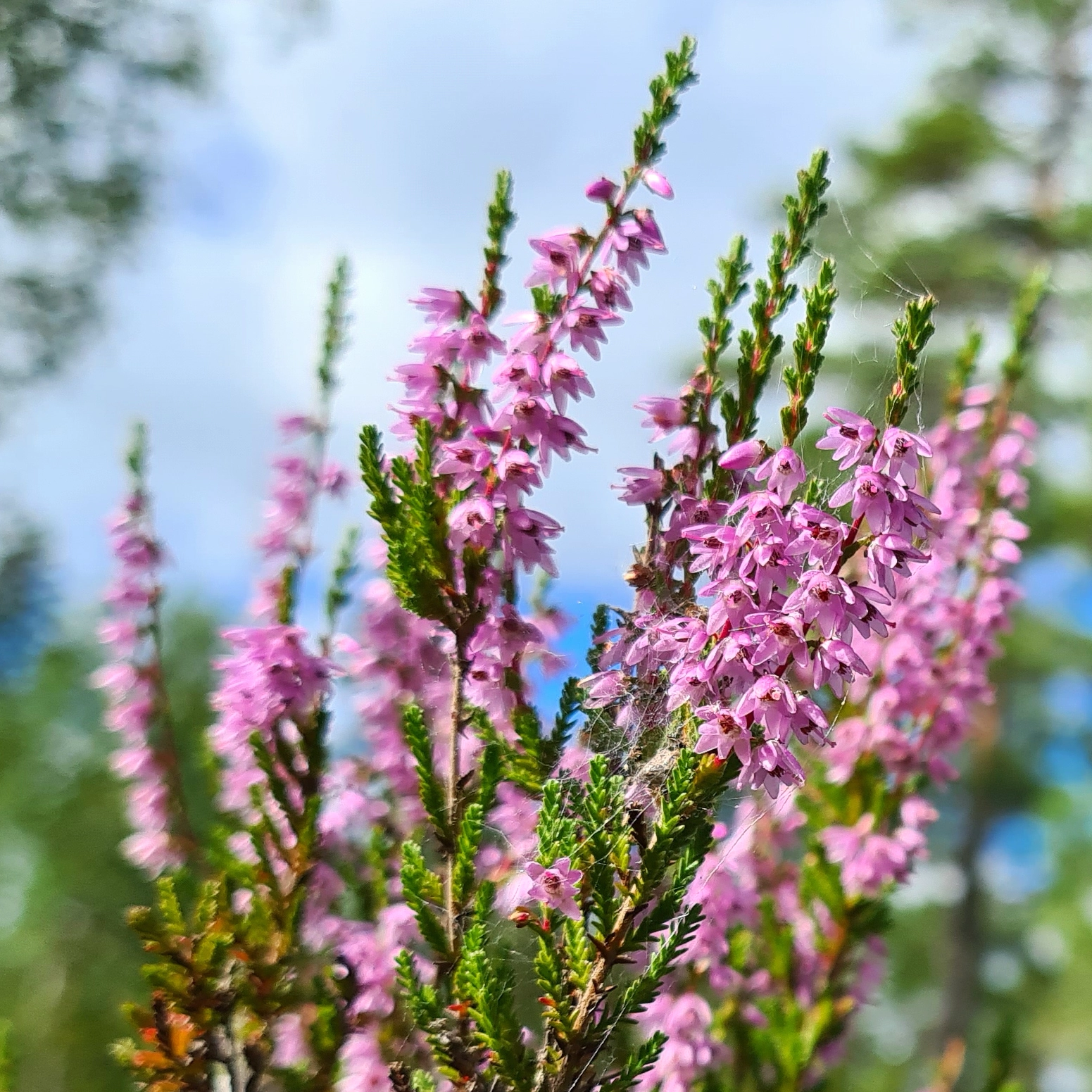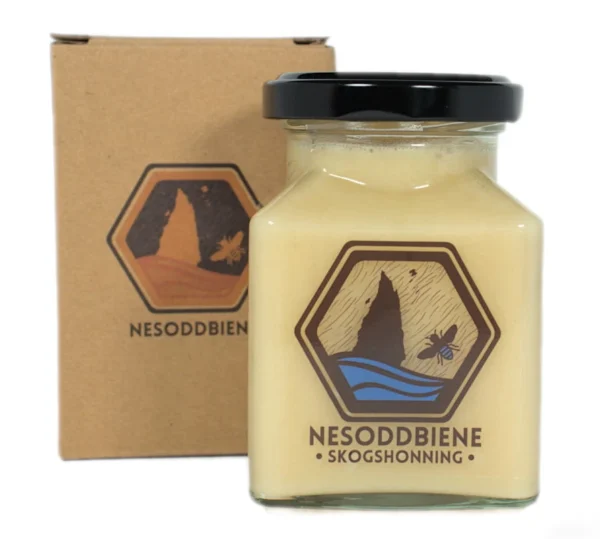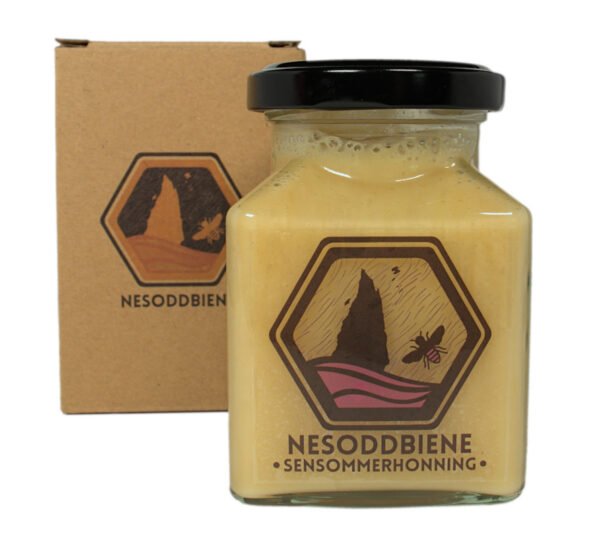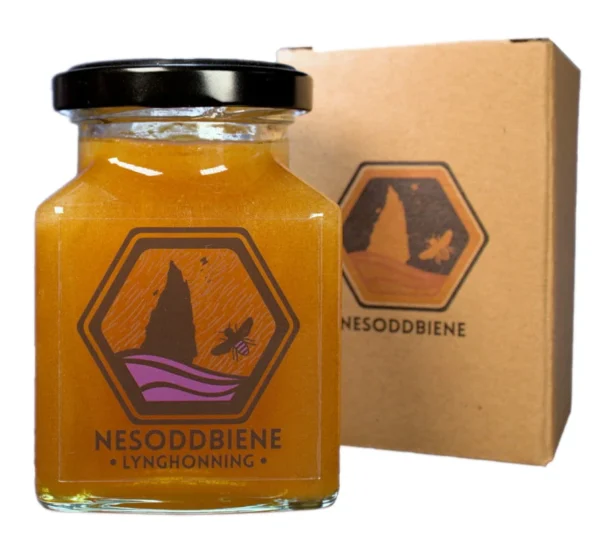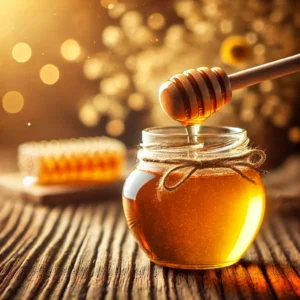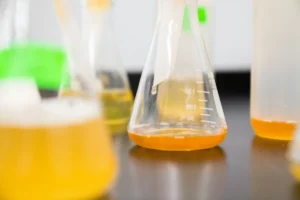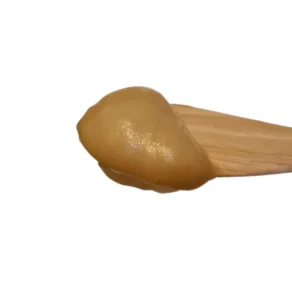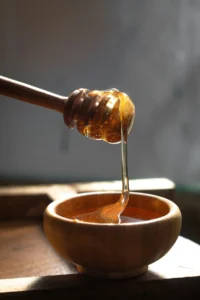Different species of heather
There are two families of flowering heather plants, Calluna and Erica. In this article, when referring to ling heather, we are talking about the plant Calluna Vulgaris.
Whilst there are several species in the Erica-family, Calluna Vulgaris is the only species in the Calluna-family.
Norway’s national flower
Ling heather is the national flower of Norway together with pyramidal saxifrage (Saxifraga Cotyledon).
You will find ling heather nearly everywhere in Norway. From late July and a few weeks into August, you’ll see this beautiful, bushy plants with purple flowers. In some areas they cover up the ground making a lovely, natural carpet.
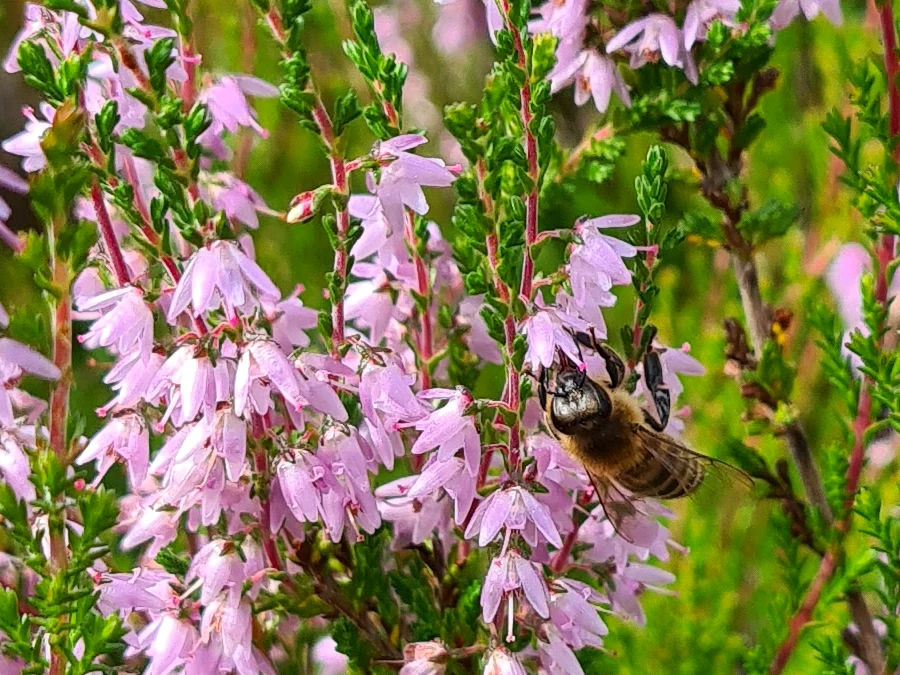
Important food for wildlife through the winter
Ling heather is an important food source for all kinds of deer during the entire year, but especially during winter. You’ll see both moose and reindeer pulling up ling heather from under the snow.
Thixotropy – change of consistency
Ling heather honey, together with manuka honey and grapefruit honey, change consistency when shaken or stirred. When left undisturbed for a while, the honey becomes like jelly. Once you shake it or stir it, it will become liquid again. This property is called thixotropy.
When harvesting ling heather honey, this becomes a challenge. The jelly-like honey in the honey frames will not easily leave the frame. We therefore use a special tool with needles, punching every cell of the honey frame, to stir the ling heather honey into liquid form. When the honey in the frame is liquid, we can harvest it like any other type of honey.
The source of mead
The Vikings used ling heather honey when making mead.
As Norwegian heather honey is the last harvest of the year in Norway, it’s happening when summer changes to autumn. This can be quite a wet time of year with a lot of rain.
When bees collect nectar in nature the water content is high. To lower the water content, the bees send air through the hive to bring out the moisture and that way lower the water content in the honey. For this to work well, they need dry air, which was rare in the later parts of the summer.
Honey is a good nutrient for yeast, therefore honey with high water content will easily start yeasting.
The Vikings discovered this and found that using this particular honey would make brilliant mead.
Today the climate is different, but we still must be aware of the water content. Low water content is crucial to provide a long shelf life of honey. In fact, if the water content is too high, we are not allowed to sell it as honey here in Norway.
Our Honey
Nkr194.35 – Nkr299.00Price range: Nkr194.35 through Nkr299.00
Nkr161.85 – Nkr249.00Price range: Nkr161.85 through Nkr249.00
Nkr194.35 – Nkr299.00Price range: Nkr194.35 through Nkr299.00
Believed to have good health benefits
Older Norwegians believed that ling heather honey would promote good health, and they would make sure they had a tiny bit every day.
There haven’t been many studies on this particular type of honey. Though, a study performed by Oslo University Hospital, they were studying the effect of honey on bacteria. In the study, they saw that both Norwegian heather honey and Manuka honey had similar strong effect on the fight against bacteria.
Some international studies also conclude that ling heather honey has strong anti-bacterial and anti-microbial properties.
Getting the purest ling heather honey
You will find ling heather all over Norway, but if it gives nectar or not depends on several factors.
To get the purest ling heather honey possible, it is crucial to find the right locations.
- The locations must be without heavy impact of other flowering plants at the time ling heather is blooming.
- The mountain or rock under the soil must be of specific types, giving the heather the right minerals to bloom and produce nectar.
- The winter must provide enough snow to cover the heather, to avoid the heather being killed by frost.
- May needs to give enough rain for the heather to develop well, before blooming at the end of July.
- Whilst the heather is blooming, the bees need warm weather without too much rain to collect this precious nectar.
Why is Norwegian Heather Honey So Rare?
The old beekeepers said that only one out of seven years give a good flow of ling heather nectar. In our experience, this still seems to be valid. We’ve had years with next to nothing and years where we were taken by surprise of the amount the bees brought in.
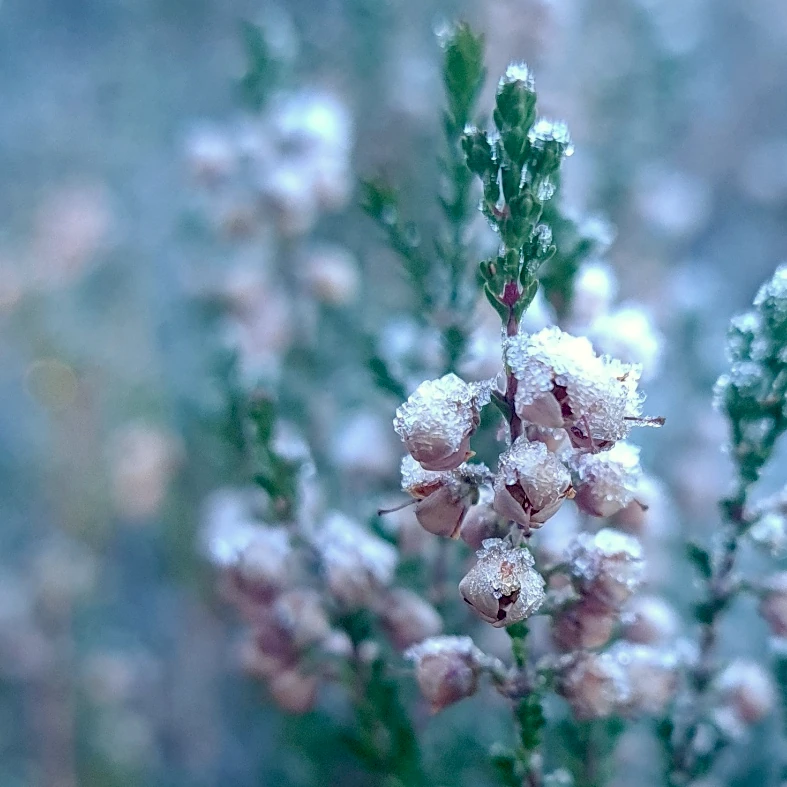
Flavour
If you’ve had ling heather honey before, it's a taste you will recognise. It's said to have on of the strongest and most pungent flavours amongst honeys.
The flavour can be described as the taste of autumn with caramel. Other descriptions used is tangy, smoky, woody, mildly sweet and warm floral aroma.
Want to learn about other Norwegian honey varieties? Read our guide!
Our honey
In our web shop you’ll find two types of honey containing ling heather honey.
Our Late Summer Honey has been collected by our bees between the middle of July until the end of August. The location of these apiaries will give the bees several flowers to collect nectar from, including ling heather.
You will still taste the ling heather in this honey, but as strongly as in our Ling Heather Honey.
Our Ling Heather Honey comes from apiaries where ling heather is the dominant flower. When our bees start collecting nectar from ling heather, we remove all remaining honey from the beehives. That way we make sure that when we are to harvest the ling heather honey, it has a minimal impact from other flowers.
And of course, our honey is always pure, raw and unheated. Also, we do not use any antibiotics or pharmaceuticals within our beekeeping.

